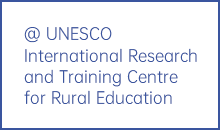Over the past two decades, low- and middle-income countries have made great progress in expanding access to schooling—especially to children and youth from the most disadvantaged families (UNESCO,2019). Yet, this expansion has brought an influx of new students to schools with widely varying levels of preparation; many of whom have parents with little or no experience with school (Pritchett & Beatty, 2015). Thus, the frontier challenge in these settings has become to reform school management and classroom instruction (which have traditionally focused on “screening” elites for higher education and the labor market) to ensure minimum levels of learning for all students. To meet this challenge, school systems need not only to change incentive structures, which often encourage teachers to focus on the top of the ability distribution, but also to build capacity within the system to cater to the diverse needs of the most disadvantaged students (see Banerjee et al., 2017; Banerjee & Duflo, 2011).
Education technology, or “ed tech,” refers to the introduction of information and technology tools in teaching and learning. Ed tech has long been heralded as a potentially game-changing “disruption” for school systems (see, for example, Christensen, Horn, & Johnson, 2011). This is in part because of its comparative advantages, relative to traditional “chalk-and-talk” classroom instruction. It can, among other things, scale up standardized instruction, facilitate differentiated instruction, expand opportunities for practice, and increase student engagement (see, e.g., Banerjee, Cole, Duflo, & Linden, 2007; Muralidharan, Singh, & Ganimian, 2019). Recent advances in artificial intelligence and machine learning, and the novel coronavirus, which caused school closings affecting over 1.5 billion students worldwide, have only intensified calls for increased use of technology in education (see, e.g., Marcus, 2020; Ovide, 2020; Weise, 2020).
However, in spite of the relentless optimism that has characterized the movement for education technology, its results have been mostly disappointing (for reviews, see Bulman & Fairlie, 2016; Escueta, Nickow, Oreopoulos, & Quan, forthcoming; Tauson & Stannard, 2018). Most notably, evidence from randomized experiments, which are designed to estimate the causal effect of programs and policies, suggests that merely equipping a school or a student with hardware (e.g., tablets, laptops, or desktop computers) has had little effect on student learning—and, in some cases, has distracted students from schoolwork (see, e.g., Barrera-Osorio & Linden, 2009; Beuermann, Cristia, Cruz- Aguayo, Cueto, & Malamud, 2015; Cristia, Ibarrarán, Cueto, Santiago, & Severín, 2017; Malamud & Pop-Eleches, 2011). Educational software that allows students to practice what they learned at school has been slightly more successful, but it has largely had modest effects (see, e.g., Huang et al., 2014; Lai et al., 2012; Mo et al., 2015). In short, the potential of education technology has not yet been realized.
In this report, we argue for a simple yet surprisingly rare approach to education technology that seeks to: (a) understand the needs, infrastructure, and capacity of a school system; (b) survey the best available evidence on interventions that match those conditions; and (c) closely monitor the results of innovations before they are scaled up. We believe this approach is sorely needed in the“ed-tech” space, where governments have often favored popular over effective reforms. The multiplicity of hardware and software products—and the eagerness in their promotion—makes it challenging for well-intended but time- constrained public officials to understand the extent to which they can improve learning. A unifying theme throughout this report is that those interested in realizing the potential of education technology should think carefully about how it will improve the learning process.
The report is structured as follows. Section 2 adapts a framework to think about the potential levers of system improvement—specifically, the interactions between teachers, students, and the instructional material, and how they can be mediated through parents. Section 3 proposes an approach to diagnose the needs, infrastructure, and capacity of a school system to adopt ed-tech interventions. Section 4 provides an overview of the four potential comparative advantages of technology to improve learning outcomes, and reviews the most rigorous evidence available on interventions from developing countries. Finally, section 5 outlines how school systems can monitor the results of innovations to understand how well they are implemented and whether they are delivering the desired improvements in student learning.













